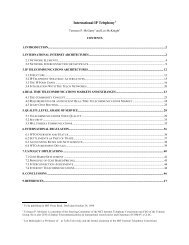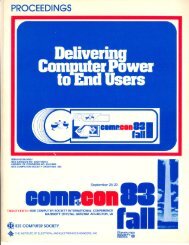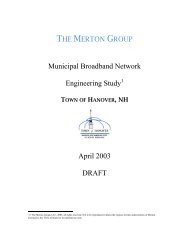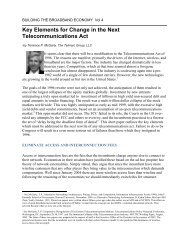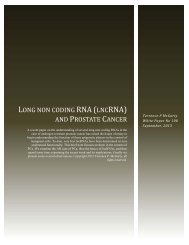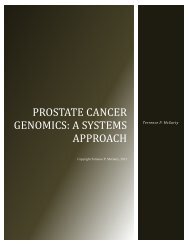progressivism, individualism, and the public ... - Telmarc Group
progressivism, individualism, and the public ... - Telmarc Group
progressivism, individualism, and the public ... - Telmarc Group
Create successful ePaper yourself
Turn your PDF publications into a flip-book with our unique Google optimized e-Paper software.
The <strong>Telmarc</strong> <strong>Group</strong><br />
PROGRESSIVISM, INDIVIDUALISM, AND THE PUBLIC<br />
INTELLECTUAL<br />
<strong>and</strong> that Taylor according to Lepore was somewhat of a fraud, <strong>the</strong> Taylor data it is<br />
alleged was all fabricated, <strong>and</strong> Galbreth had little if any basis for his facts <strong>and</strong><br />
recommendations.<br />
The author has done a superb job at writing <strong>the</strong> biography. Yet it does have in my opinion<br />
certain weaknesses. In certain parts of <strong>the</strong> text <strong>the</strong> sentences are wonderful but <strong>the</strong><br />
paragraphs do not hold toge<strong>the</strong>r, <strong>the</strong>re is jumping around in time <strong>and</strong> in concepts being<br />
discussed. In contrast, <strong>the</strong> Lepore article has a style that is quite readable, whereas that of<br />
Urofsky is at times cumbersome <strong>and</strong> pedantic. As stated in my discussion of privacy <strong>and</strong><br />
"management", Br<strong>and</strong>eis set <strong>the</strong> gold st<strong>and</strong>ard for privacy <strong>and</strong> I believe Urofsky could<br />
have taken that fur<strong>the</strong>r, <strong>and</strong> with Taylor <strong>and</strong> Galbreth, I believe Br<strong>and</strong>eis just did not do<br />
his home work, <strong>and</strong> this was a failing.<br />
I have been a fan of Judge Br<strong>and</strong>eis for much of what he accomplished especially with<br />
<strong>the</strong> writing of <strong>the</strong> classic paper, The Right to Privacy, with his <strong>the</strong>n law partner<br />
Warren 110 . (Two recent works on Br<strong>and</strong>eis have appeared <strong>and</strong> are worth note. The first is<br />
an article in The New Yorker by Jill Lepore, a superb piece of critical <strong>and</strong> historical<br />
analysis 111 . Lepore looks at <strong>the</strong> field of management <strong>and</strong> efficiency consultants through<br />
<strong>the</strong> work of Br<strong>and</strong>eis 112 .<br />
She starts her article by stating:<br />
"Ordering people around, which used to be just a way to get things done, was elevated to<br />
a science in October of 1910, when Louis Br<strong>and</strong>eis, a fifty-three-year-old lawyer from<br />
Boston, held a meeting at an apartment in New York with a bunch of experts who, at<br />
Br<strong>and</strong>eis’s urging, decided to call what <strong>the</strong>y were experts at “scientific management.”<br />
Everyone <strong>the</strong>re—including Frank <strong>and</strong> Lillian Galbreth, best known today as <strong>the</strong> parents<br />
in “Cheaper by <strong>the</strong> Dozen”—had contracted “Tayloritis”: <strong>the</strong>y were enthralled by an<br />
industrial engineer from Philadelphia named Frederick Winslow Taylor, who had been<br />
ordering people around, scientifically, for years."<br />
The essence of <strong>the</strong> tale is that Br<strong>and</strong>eis sitting on a regulatory body which controlled <strong>the</strong><br />
monopoly like rates of railroads had gotten enthralled with <strong>the</strong> less than scientific work of<br />
Taylor <strong>and</strong> <strong>the</strong> Galbreth. He <strong>the</strong>n saw that railroads should employ <strong>the</strong>se new<br />
management techniques <strong>and</strong> <strong>the</strong>n lower <strong>the</strong>ir rates. Simple, except as Lepore states <strong>the</strong><br />
Taylor results were a fraud! Perhaps <strong>the</strong>re is a lesson here for global warming, telephone<br />
interconnection rates <strong>and</strong> <strong>the</strong> like. Br<strong>and</strong>eis was a brilliant legal scholar, however he had<br />
no expertise in <strong>the</strong> area of actually running a company. He did however underst<strong>and</strong> <strong>the</strong><br />
"books" <strong>and</strong> as such used this profitably in his law practice. Yet <strong>the</strong> Taylor approach<br />
assumed you looked forward <strong>and</strong> not backward, that you understood <strong>the</strong> business <strong>and</strong> not<br />
110 See 4 Harvard Law Review 193 (1890)).<br />
111 http://www.newyorker.com/arts/critics/atlarge/2009/10/12/091012crat_atlarge_lepore<br />
112 http://www.newyorker.com/arts/critics/atlarge/2009/10/12/091012crat_atlarge_lepore<br />
Page 101



